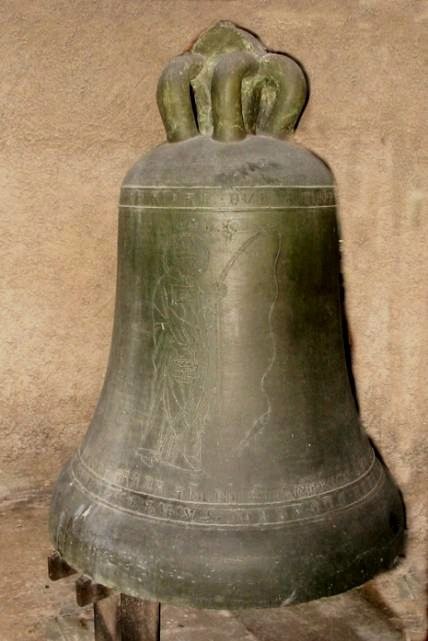Bronze Casting
sub-topics:Renaissance bronze casting processes
(MameiSun? ) -- See MameisNotebook for her Word document (attached at bottom of page) with some comments from mrc.(JaymievieveAng? ) -- See JaymiesNotebook for her Word document & some comments from mrc.
- http://www.metmuseum.org/toah/hd/scbz/hd_scbz.htm
- These guys still do wax casting in pretty much the 1500s way: http://www.lotussculpture.com/bronze_sculpture_bronze_casting.htm
- Quick summary of lost-wax process from Cantor Foundation: http://www.cantorfoundation.org/Rodin/Bronze/casting1.html -- click on the thumbnail pictures to get a slide show. This is the more advanced process (Rodin) in which a thin wax "shell" is created to make a high quality hollow casting.
- Some useful notes and links at bottom of this page too: http://www.flikier.com/bronze.htm
Around 1500, founders developed the technology for replicating compositions. The first great entrepreneurs in casting and exquisitely patinating statuettes were the Flemish-born Mannerist Giovanni Bologna—known as Giambologna—and his assistants in Florence in the second half of the sixteenth century.
From http://www.metmuseum.org/toah/hd/scbz/hd_scbz.htm What was this replication technique and how did it work? Learn more about Giambologna...
Another interesting quotation (http://www.lifeinitaly.com/art/early-renaissance-2.asp):
This sculpture was highly ornate, and due to the amount of detailing in the draping required a deviation from standard bronze techniques. To combat these problems Donatello developed a unique technique for casting bronze sculptures: first sculpting the figure in clay, then draping clay soaked cloth around the sculpture, allowing the clay to dry, and then making a mold from the results. It was in this manner that Donatello achieved the flowing grace of draping cloth, smooth lines, and polished surface, in his bronze works. Later artists would employ this same technique. During this time in his career Donatello partnered with a sculpture named Michelozzo. Together the two produced a sculpture dedicated to pope John XXIII; the relief of the Assumption of the Virgin on the Brancacci tomb in Sant'Angelo a Nilo, Naples; and the reliefs of theoutdoor pulpit of Prato Cathedral. As his style diverged from that of Brunelleschi their friendship fell in disrepair and was never fully reconciled.
-- worth learning more about.
Process issues & problems
(MeghanKennedy? ) -- See MegsNotebook#MeghanBronzeCasting for Meg's notes to go with poster. Issues and problems associated with bronze casting in the Renaissance (and in general)- Shrinkage and its effects
- Why can't you just add more bronze top "top up" a partly-filled mold after the first pour has hardened?
- Gasses, porosity, etc. (what is porosity? Why is it undesirable?)
- Why was cast bronze a particularly good choice for making a bell?
Who and How
(RaynaWiles? ) -- See RaynasNotebook (bottom of page) for Word document final writeup & a few comments -mrc.- Which artists did which pieces? How did they do it? Did they use particular foundry facilities -- and if so, whose?
- Link with discussion (in Italian) about history of bronze in Italy and a note about the Renaissance advances in making bells and canons.
Il Rinascimento italiano segna, nel settore delle fusioni in bronzo e dei gioielli, un momento alto e forse mai più superato: Lorenzo Ghiberti, Donatello, Antonio del Pollaiolo, Andrea del Verrocchio, Bartolomeo Cennini e Benvenuto Cellini, sono solo alcuni dei nomi che hanno contribuito ad una produzione molto raffinata e dagli esiti estetici di assoluta eccellenza.
Weathering and Restoration
(AliceWarnecke? ) -- See AlicesNotebook#AliceBronzeRestoration for more notes and MS Word document writeup.- What happens to bronze with time? With pollution?
- Various oxidation modes (patina) and other effects -- see also the links above for hydrogen embrittlement (under "problems") as a function of aging and corrosion.
- How do we protect statues?
- How do we restore damaged statues?
Other references and links
Da Vinci's Horse
- Making of the horse from Leonardo Da Vinci's Horse website
- From clay to bronze http://www.leonardoshorse.org/clay2bronze.asp
- Tallix Design, Beacon NY, did some of the work for the reconstruction of Leonardo's horse. Their website has a video clip from a Martha Stewart TV blurb (Dec. 02) that features their artisan foundry http://www.tallix.com/movietheater/index.html
Process Links
- General bronze casting problems:
- notes on making a modern monument with some discussion about how a large piece was cut into sections, cast, joined, etc. Also some general points about shrinkage, etc.
- Shrinkage and how it creates defects in parts - nice short description in this trade article (see PDF attached below):
A thin section will complete its solidification
first. As it solidifies, it begins
to shrink and draws metal to refill
this shrinkage from the larger section
adjoining it. The thin section draws
metal until it solidifies. The thick section
is the last to solidify. However, as it
solidifies it is looking for somewhere
from which to refill its metal. Since the
thin section adjoining it has already solidified,
the thick section has nowhere
to draw from and a shrinkage defect (an
area of lesser density level often referred
to as porosity) will develop on the exterior
or interior of the casting.
From G. Smith and A. Spada, "Thick and Thin, Designing Copper Base Sand Castings," Engineered Casting Solutions, Winter 2003. For a bit more on how this happens, see the powerpoint slides attached below.
- What exactly is hydrogen embrittlement?
- stress + presence of hydrogen in the metal => hydrogen at crack tips => failure.
- The following sites give a basic description of the problem, although they are concerned more with hydrogen due to corrosion & age + the imposition of loads, as opposed to during casting:
- To take care of gas bubbles (sources of porosity and perhaps hydrogen embrittlement) today one can use a degassing agent: http://budgetcastingsupply.com/Brass_Degas.html
- large bronze bell :

- Casting.ppt: longer version of casting presentation from MIT
Ideas, requests, problems regarding TWiki? Send feedback